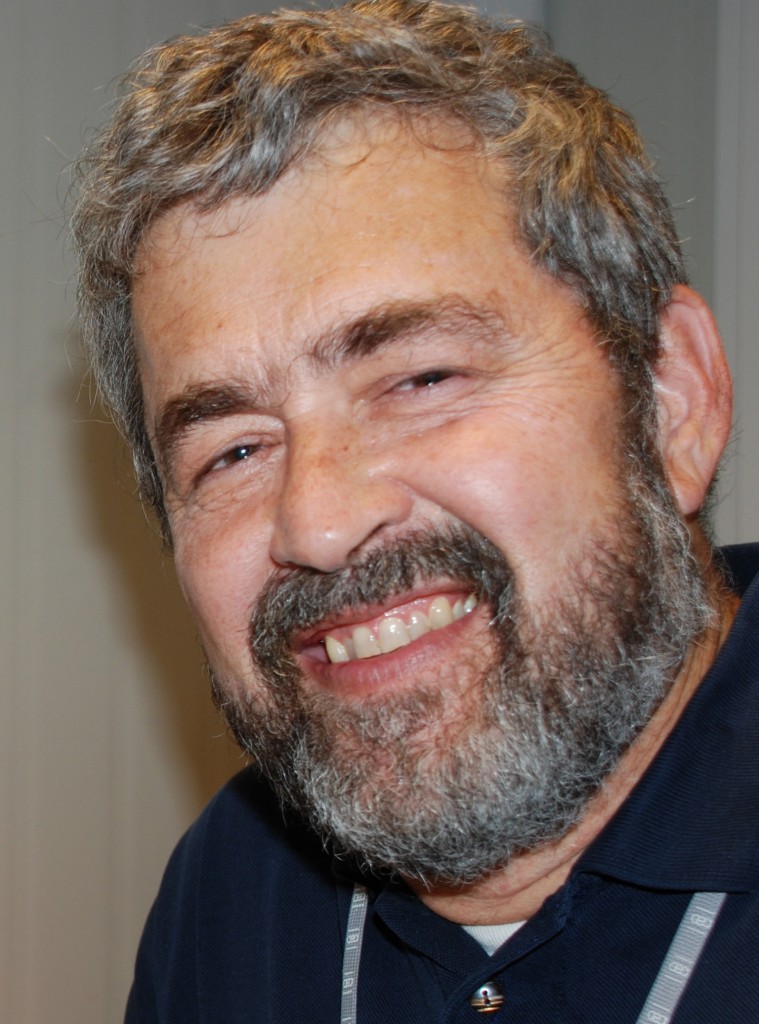ITER NEWSLINE
54
The challenges of integrated modelling
Wayne Houlberg, ITER Integrated Modelling Section
The challenges of integrated modelling

Wayne Houlberg

Science becoming art: a kink instability from a nonlinear extended MHD simulation (from "Fusion Simulation Project Workshop Report" by Arnold Kritz and David Keyes)
The overall aims of this program are to meet the initial needs of the ITER Project for more accurate predictions of ITER performance and for efficient control of ITER plasmas, to support the preparation for ITER operation and, in the longer term, to provide the modelling and control tools required for the ITER exploitation phase.
Integrated modelling has many different aspects. Theoretical plasma physicists see the ultimate goal as the ability to predict reliably the behaviour of plasma discharges on all relevant time and space scales. Computational physicists see the complexity of the most advanced multi-physics nonlinear simulation models requiring petascale-class (1015 floating point operations per second), and ultimately exascale-class (1018 flops), computer facilities in order to span the relevant time and space scales.
"Currently we consider that transport processes are driven by micro-turbulence generated the thermal plasma," explains Wayne Houlberg, Head of the Integrated Modelling group within ITER. "But in ITER we expect the energetic alpha particles will drive additional transport through instabilities called Alfven eigenmodes. These Alfven eigenmode instabilities have been observed in current machines that are heated with energetic ions from neutral beam injection, and are generally fairly isolated and benign." However, in ITER they are expected to become much more important, especially in the later, high performance, stages. "In these conditions the modes that we now see in isolation may overlap and interact non-linearly. This is something that only a burning plasma such as ITER will be able to address; it is the type of physics that puts ITER in the category of a physics research facility rather than a DEMO facility."
Experimental plasma physicists see it as unifying the simulation of plasma behaviour in the core, edge, scrape-off layer and divertor along with the interaction between the plasma and the plasma-facing components. To machine operators, the challenge is to steer the evolution of the plasma by effective use of auxiliary systems—heating, fuelling, current drive and magnetics—through the start-up, flat-top and shut-down phases while avoiding regimes of undesirable behaviour.
The control algorithms for this must incorporate very efficient descriptions of the physics in order to effect a timely response. If you are a modeller sitting at a terminal, integrated modelling is everything you can fit into a calculation that produces results in a reasonable amount of clock time. The patience of modellers varies from the time between cups of coffee to a night to sleep on it.
All of these conditions describe aspects of integrated modelling that are relevant to present experimental devices. The ITER integrated modelling program is being designed to accommodate these as well as new challenges: simulating the physics of a largely self-driven system with new behaviour expected to result from energetic fusion products, incorporating the safety and operational constraints of a nuclear environment, and assembling a cohesive team from the diverse ITER Members.
A bit like climate modelling
Talking about the technical aspect of this effort, how will this joint effort be realized? "This is indeed a real challenge," replies Houlberg. "ITER will not have the computer facilities or personnel to do it all. We envisage establishing connections to various computational networks to enable the more advanced modelling. The most detailed models that require petaflop and eventually exaflop capabilities will be performed by external users in the ITER Members fusion programs, using links to ITER data and analysis capabilities. This is one aspect of the collaborative effort between the ITER Organization and ITER Members. As in climate modelling, for example, these detailed calculations would be used to calibrate/validate the simpler, faster models that are used in more routine scoping, planning and analysis of ITER plasmas. And as these R&D models are validated and computing facilities allow, they can be migrated to the standard ITER suite of integrated modelling codes."
The development of the ITER integrated modelling program will rely heavily on the relevant expertise within the Members' fusion programs, building to the greatest extent possible on existing coordination structures within the Member programs. It will include adaptation of existing physics codes, physics code development, development of a modelling infrastructure, benchmarking and validation activities. The infrastructure is being designed to accommodate the expected evolution of the physics and interaction with auxiliary and control systems over the expected 30-year life of the project and serve as a solid basis for the design of DEMO.
return to Newsline #54



